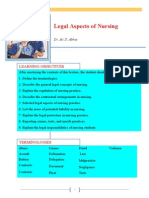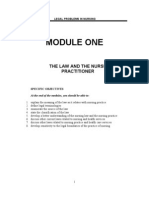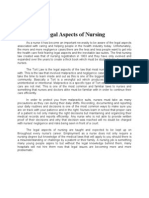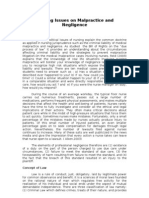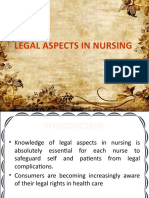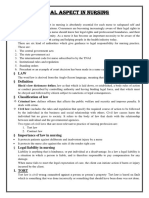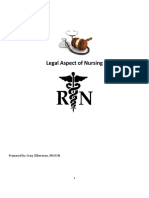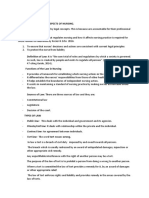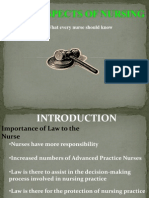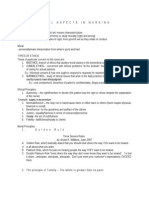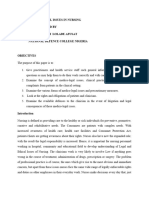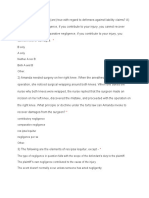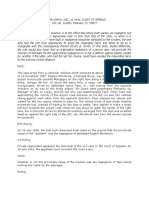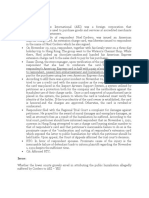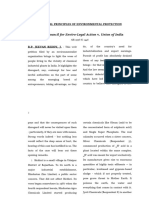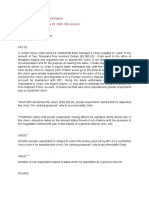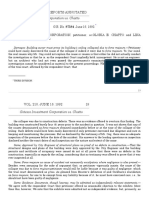0% found this document useful (0 votes)
27 views11 pagesMvgfci Detailed Learning Module3
Module 3 of the Legal Aspects of Nursing course focuses on the legal responsibilities of nurses and the importance of understanding laws that govern nursing practice. It covers various legal topics including malpractice, negligence, informed consent, and the role of nurses as advocates for patient safety. The module aims to equip nursing students with the knowledge necessary to navigate legal issues in their professional practice.
Uploaded by
Micha SorianoCopyright
© © All Rights Reserved
We take content rights seriously. If you suspect this is your content, claim it here.
Available Formats
Download as PDF, TXT or read online on Scribd
0% found this document useful (0 votes)
27 views11 pagesMvgfci Detailed Learning Module3
Module 3 of the Legal Aspects of Nursing course focuses on the legal responsibilities of nurses and the importance of understanding laws that govern nursing practice. It covers various legal topics including malpractice, negligence, informed consent, and the role of nurses as advocates for patient safety. The module aims to equip nursing students with the knowledge necessary to navigate legal issues in their professional practice.
Uploaded by
Micha SorianoCopyright
© © All Rights Reserved
We take content rights seriously. If you suspect this is your content, claim it here.
Available Formats
Download as PDF, TXT or read online on Scribd
/ 11
